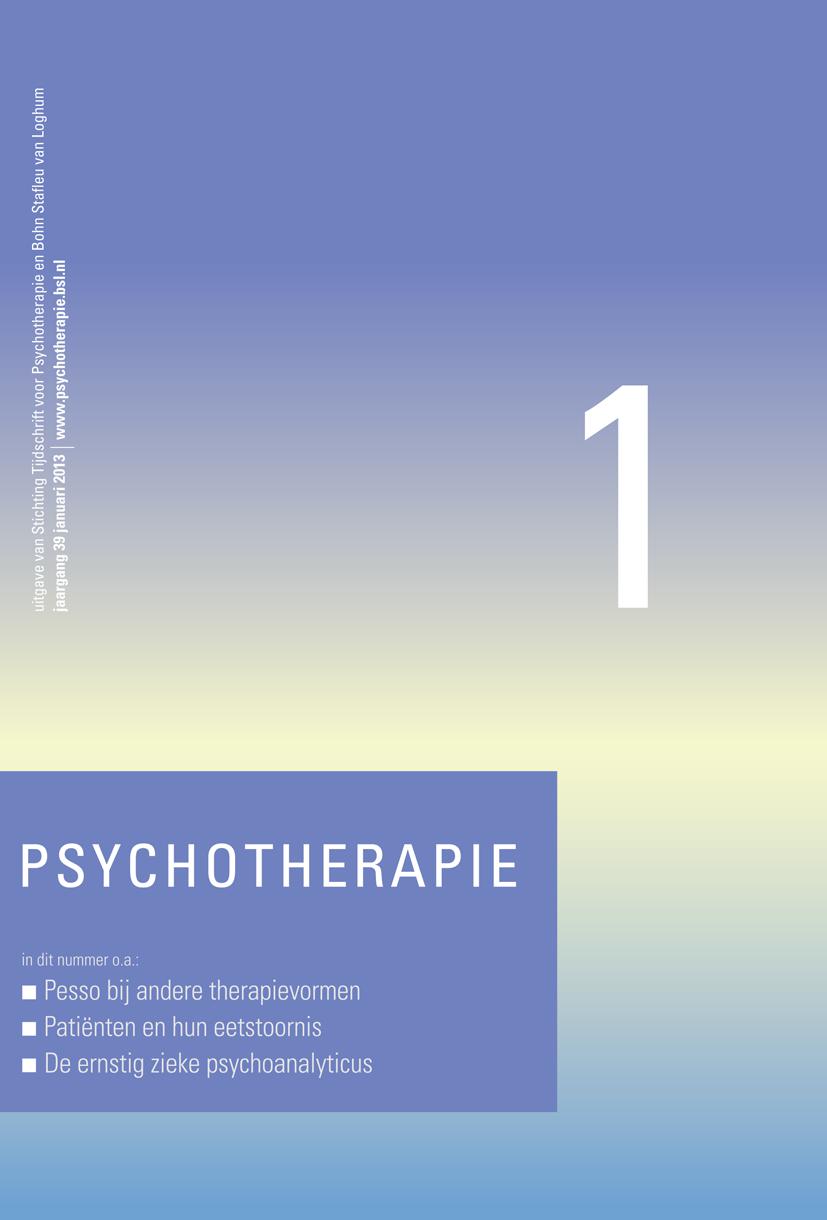Louis Sommeling, met medewerking van Prijna van Duuren, Gerrit de Bruine, Philip Jonkers en Wouter Wouters
Louis Sommeling1, Prijna van Duuren1, Gerrit de Bruine1, Philip Jonkers1 Wouter Wouters1
Pesso-psychotherapy and her additional contribution to varied therapeutic schools
| • |
Pesso-psychotherapy (in USA named PBSP: Pesso Boyden System Psychomotor) proves to be a valuable addition to other therapeutic
schools like Emotion Focused Therapy, systems therapy, Schema Focused Therapy and Psychoanalytic Psychotherapy. Pesso-psychotherapy
is not only specialized in building up the theatre of the mind, but is able to deepen new corrective experiences in the body.
The position at-the-side of the Pesso-therapist creates safety in body-oriented therapies and is an easier way to treat and
clarify the various aspects of transference.
|
Maries Roosen, Michelle Davies en Debby Postulart
Maries Roosen1, Michelle Davies1 Debby Postulart1
Recovery from an eating disorder: the patient’s perspective
| • |
In research into the recovery criteria for eating disorders little attention has been paid to the patients views of their
recovery. This study aims to provide more knowledge about the patients’ perspective on recovery using the ‘Evaluation of Eating
Disorders Treatment List’.
From the patient’s point of view the ending, if present, of binging and compensatory behaviour is the most important element
in their recovery process. In addition to this behavioural criterion, there are several important psychological aspects: finding
the motivation to solve the eating disorder, developing awareness and autonomy (in particular increasing self-confidence and
improving the attitude towards the body), receiving social support and processing traumatic and painful experiences.
|
Peter Vermeulen
Peter Vermeulen1
When a psychoanalyst becomes severely ill….
| • |
This article examines the issue of how a psychoanalyst might proceed with regard to his patients if he turns out to have a
life-threatening illness. The focus is on the transparency an analysand would need or is entitled to and on its influence
on the analysis. The literature on this subject is not extensive but does demonstrate differences of opinion as to the degree
of openness about the nature, seriousness and treatment of an analyst’s disease. The same applies to the effects the various
positions concerning self-disclosure in these circumstances have on the analytical space, therapeutic alliance, transference
and countertransference. An overview of the diverging visions on these matters is accompanied by a description of the author’s
own experiences: as a patient suffering from non-Hodgkin’s lymphoma, but more particularly - with the aid of vignettes describing
two cases - as an analyst in training.
|

